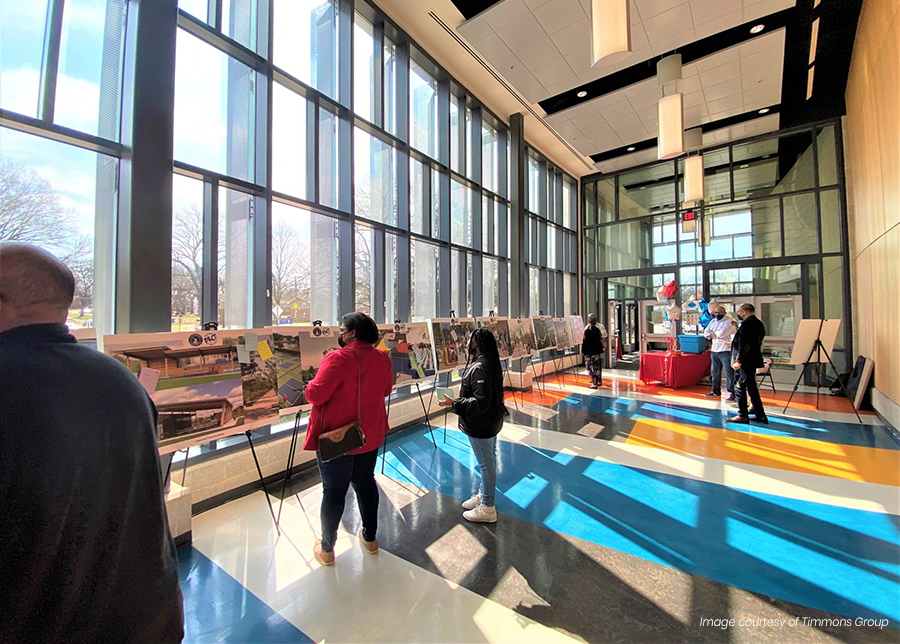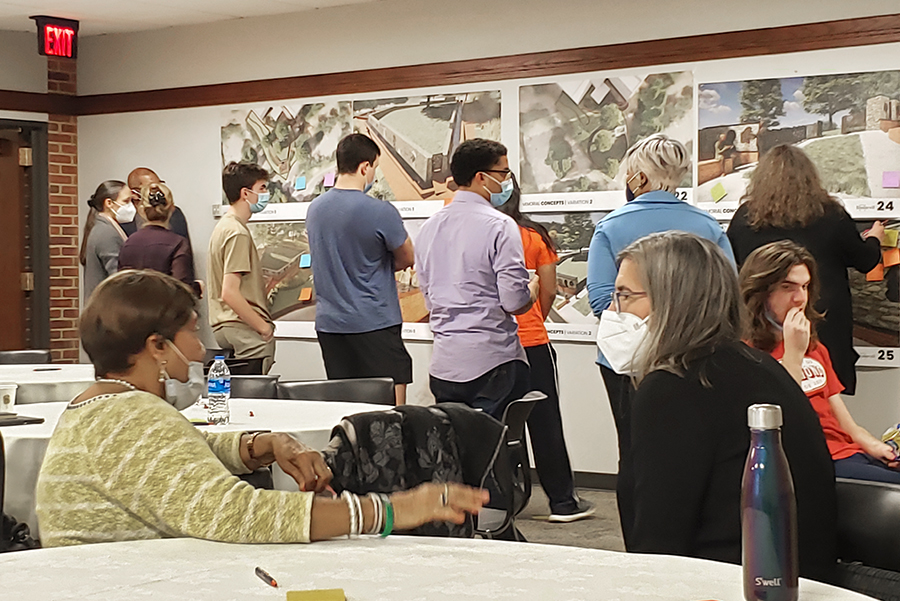Architecture, by its nature, is design for people. At its best, it’s an articulate response to dialogue between constituents and space. Balancing values, and value, it ultimately reveals a carefully crafted structure meant to stand both the test of time and the trials of humanity. The needs are great; the opportunities many.
In many ways, we are facilitators of the knowledge, experiences, and stories of the collected communities in which we work. The spaces we help shape are defined by their innate locality, and the individuals who live, work, utilize, and otherwise engage with them. From project to project the roster of contributors and collaborators differ, but the intent of engagement does not: we want to hear from everyone who will be most impacted by our work.

Ask.
Building trust and partnership with communities is a critical component of the engagement process, and we do that by asking, and learning about, our stakeholders. A central tenet of our design methodology, the ask is at the heart of embracing an open discourse of ideas.
“In our work on two new community centers, that means being in the neighborhoods these centers will serve, talking with residents about the ways in which they go about their daily life,” says Burt Pinnock, FAIA, NOMA, who is leading design efforts on the projects. We want to understand how a new community center might impact their individual and collective activities and explore what specific aspects of the design would be critical to its long-term success. In our work with communities, we’ve learned that those nearest potential challenges are closest to potential solutions as well.
Listen.
For projects like Emory University’s Twin Memorials and The Burying Ground at the University of Richmond, it’s the stories of ancestors, descendants and their families, community members, students, faculty, and staff that frame the work ahead. Our team, in partnership with established university working groups, gather meaningful input and lived experiences from various groups to help inform the design process. Understanding the ways in which each stakeholder group contributes to the comprehensive narrative is fundamental to the success of not only engagement, but what is built as well. Knowledge sharing on this type of intimate level is ultimately what delivers strong design and collective ownership.

Create.
Distilling the various information, anecdotes, emotions, and experiences is where the dialogue becomes an artifact. Our artifacts are how our descendants will come to know us. Central themes and words emerge from the voices shared in the engagement sessions, while sketchy lines and inspiration palettes give way to dynamic and interpretive spaces. In Williamsburg, William & Mary’s Hearth: Memorial to the Enslaved evokes an asymmetrical brick fireplace, embodying both the emptiness of slavery and radiating the warmth and familiarity of home, themes that emerged repeatedly in the engagement process. The geometry of Hearth transforms the historic entrance to campus, while visibly and fundamentally connecting the campus’s two distinct sides, acknowledging the redirection of thoughts and ideas that took place.
Practice in a vacuum is useful in theory; it affords us unlimited creative exploration. But establishing spaces and places that truly represent who we the people are as a society, as a culture, and as individuals living collectively, means we must engage, ask questions that matter, listen intently for meaning and create lasting impact. Let’s work together, and do just that.




